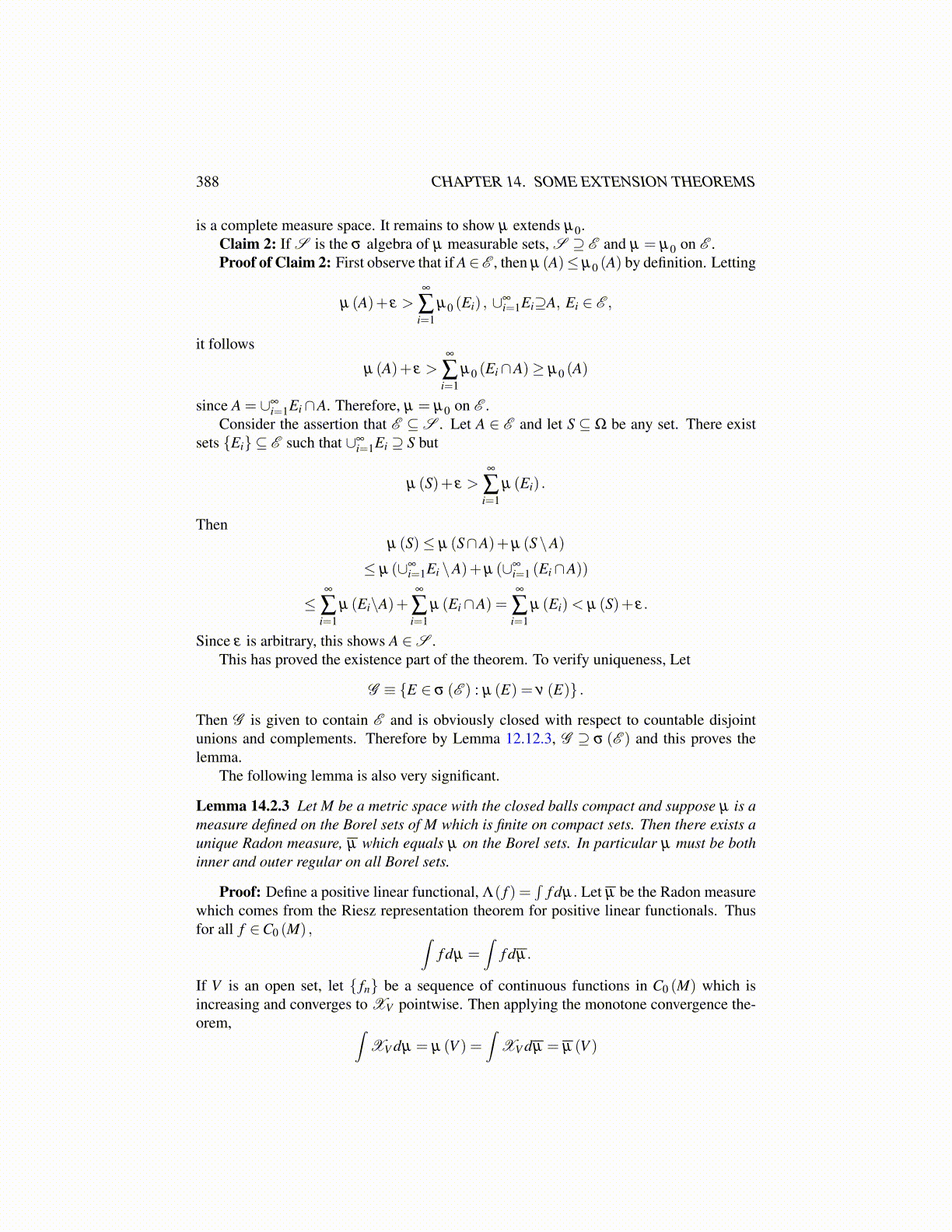
388 CHAPTER 14. SOME EXTENSION THEOREMS
is a complete measure space. It remains to show µ extends µ0.Claim 2: If S is the σ algebra of µ measurable sets, S ⊇ E and µ = µ0 on E .Proof of Claim 2: First observe that if A∈ E , then µ (A)≤ µ0 (A) by definition. Letting
µ (A)+ ε >∞
∑i=1
µ0 (Ei) , ∪∞i=1Ei⊇A, Ei ∈ E ,
it follows
µ (A)+ ε >∞
∑i=1
µ0 (Ei∩A)≥ µ0 (A)
since A = ∪∞i=1Ei∩A. Therefore, µ = µ0 on E .
Consider the assertion that E ⊆S . Let A ∈ E and let S ⊆ Ω be any set. There existsets {Ei} ⊆ E such that ∪∞
i=1Ei ⊇ S but
µ (S)+ ε >∞
∑i=1
µ (Ei) .
Thenµ (S)≤ µ (S∩A)+µ (S\A)
≤ µ (∪∞i=1Ei \A)+µ (∪∞
i=1 (Ei∩A))
≤∞
∑i=1
µ (Ei\A)+∞
∑i=1
µ (Ei∩A) =∞
∑i=1
µ (Ei)< µ (S)+ ε.
Since ε is arbitrary, this shows A ∈S .This has proved the existence part of the theorem. To verify uniqueness, Let
G ≡ {E ∈ σ (E ) : µ (E) = ν (E)} .
Then G is given to contain E and is obviously closed with respect to countable disjointunions and complements. Therefore by Lemma 12.12.3, G ⊇ σ (E ) and this proves thelemma.
The following lemma is also very significant.
Lemma 14.2.3 Let M be a metric space with the closed balls compact and suppose µ is ameasure defined on the Borel sets of M which is finite on compact sets. Then there exists aunique Radon measure, µ which equals µ on the Borel sets. In particular µ must be bothinner and outer regular on all Borel sets.
Proof: Define a positive linear functional, Λ( f ) =∫
f dµ. Let µ be the Radon measurewhich comes from the Riesz representation theorem for positive linear functionals. Thusfor all f ∈C0 (M) , ∫
f dµ =∫
f dµ.
If V is an open set, let { fn} be a sequence of continuous functions in C0 (M) which isincreasing and converges to XV pointwise. Then applying the monotone convergence the-orem, ∫
XV dµ = µ (V ) =∫
XV dµ = µ (V )